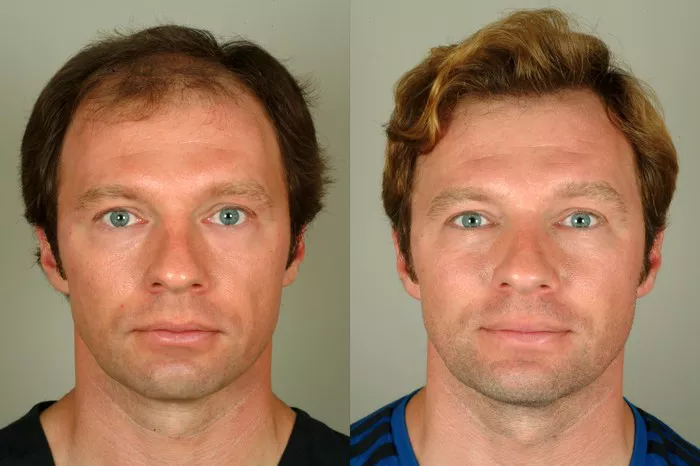Hair transplants have become increasingly popular as a solution for hair loss, providing a permanent option for those looking to regain their confidence. However, the journey doesn’t end once the procedure is complete. Understanding what to expect two months after a hair transplant is crucial for a smooth recovery and optimal results. This article will guide you through the timeline of changes, potential concerns, and tips for maintaining your new hair.
A hair transplant is a surgical procedure where hair follicles are relocated from a donor site to areas experiencing thinning or balding. While many people look forward to their new hair, the healing process can be complex. By the two-month mark, patients typically experience significant changes in their hair and scalp, but it’s essential to recognize that individual experiences can vary.
The Healing Timeline: Month One vs. Month Two
Month One: Initial Recovery
In the first month after a hair transplant, patients usually experience:
Swelling and Redness: The scalp may be swollen and red around the transplant sites.
Scabbing: Small scabs will form at the sites where the follicles were implanted.
Shedding Phase: Patients often notice hair shedding, commonly referred to as “shock loss.” This is a normal part of the process and does not indicate failure of the transplant.
Itching or Discomfort: The scalp may feel itchy or uncomfortable, which can be alleviated with prescribed medications.
Month Two: Growth and Changes
By the two-month mark, patients should observe:
Reduction in Swelling and Redness: Swelling typically subsides, and redness diminishes significantly.
New Hair Growth: Patients may start to see small, fine hairs emerging from the transplanted follicles. This growth is often referred to as “peach fuzz.”
Continued Shedding: While some new hair will begin to grow, shedding may continue for some patients. This is still normal.
Improved Scalp Sensitivity: The scalp may feel less sensitive as healing progresses.
Factors Influencing Recovery
Several factors can influence how a patient’s hair and scalp respond after a transplant:
Type of Hair Loss: Genetic predisposition can affect hair density and growth patterns.
Age and Health: Younger, healthier individuals often experience better results.
Post-Operative Care: Following the surgeon’s aftercare instructions is crucial for optimal healing and growth.
Common Concerns Two Months Post-Transplant
1. Shock Loss
As mentioned, shock loss can be a concern for many patients. It’s essential to understand that this is a temporary phase, and hair typically regrows within a few months.
2. Uneven Growth
Some patients may notice uneven growth among the transplanted hairs. This can be a natural occurrence, as hair growth can vary from follicle to follicle. Patience is key, as hair tends to mature over time.
3. Itching and Discomfort
While discomfort typically decreases after the first month, some patients may still experience itching. It’s important to avoid scratching to prevent irritation or infection.
4. Concerns About Hair Thickness
At two months, new hairs may appear fine and less dense. It’s essential to remember that full results often take up to a year to manifest. As the hair matures, it should become thicker and more robust.
Tips for Optimal Recovery
To support healing and promote healthy hair growth, consider the following tips:
1. Follow Post-Operative Care Instructions
Adhering to the guidelines provided by your surgeon is critical. This may include recommendations for shampooing, avoiding certain activities, and taking prescribed medications.
2. Avoid Sun Exposure
Protecting your scalp from direct sunlight is crucial during the healing process. Wearing a hat or using sunscreen designed for the scalp can help prevent irritation.
3. Maintain a Healthy Diet
Eating a balanced diet rich in vitamins and minerals can support hair growth. Foods high in protein, iron, and vitamins A, C, and E are particularly beneficial.
4. Stay Hydrated
Drinking plenty of water helps maintain skin health and can aid in the healing process.
5. Manage Stress
Stress can negatively impact hair growth. Engage in activities that promote relaxation, such as yoga or meditation.
When to Contact Your Surgeon
While some changes are normal, certain symptoms may require professional attention:
Severe Pain: If you experience significant pain that doesn’t subside with over-the-counter medications, contact your surgeon.
Excessive Redness or Swelling: Persistent swelling or redness beyond the expected timeframe may indicate infection.
Unusual Discharge: Any discharge that is green, yellow, or has a foul odor should be reported.
The Road Ahead: What to Expect After Two Months
The two-month mark is just the beginning of your hair restoration journey. Expect to see more significant growth in the coming months, with the hair becoming denser and fuller. Most patients achieve their desired results between six months to a year post-surgery.
Conclusion
Understanding what to expect two months after a hair transplant is essential for managing your expectations and ensuring a successful recovery. While some challenges may arise during this time, being aware of the process can help you navigate it with confidence. Remember, patience is vital, and the results you desire are on the horizon. By taking care of your scalp and following your surgeon’s advice, you’ll be well on your way to enjoying your new hair.
Related topics:
- Hair Transplants and Alopecia: Do They Really Work?
- Does FUE Leave Scars? Understanding Follicular Unit Extraction
- Understanding Post-Transplant Numbness: Duration and Recovery


